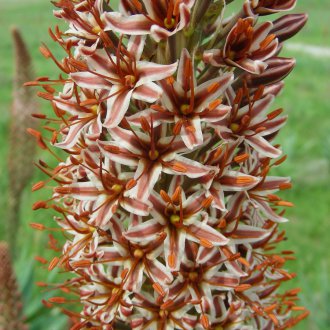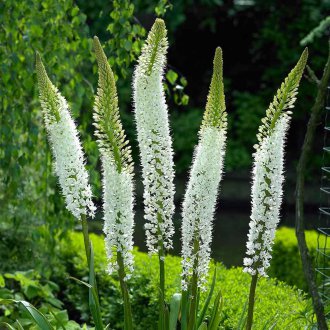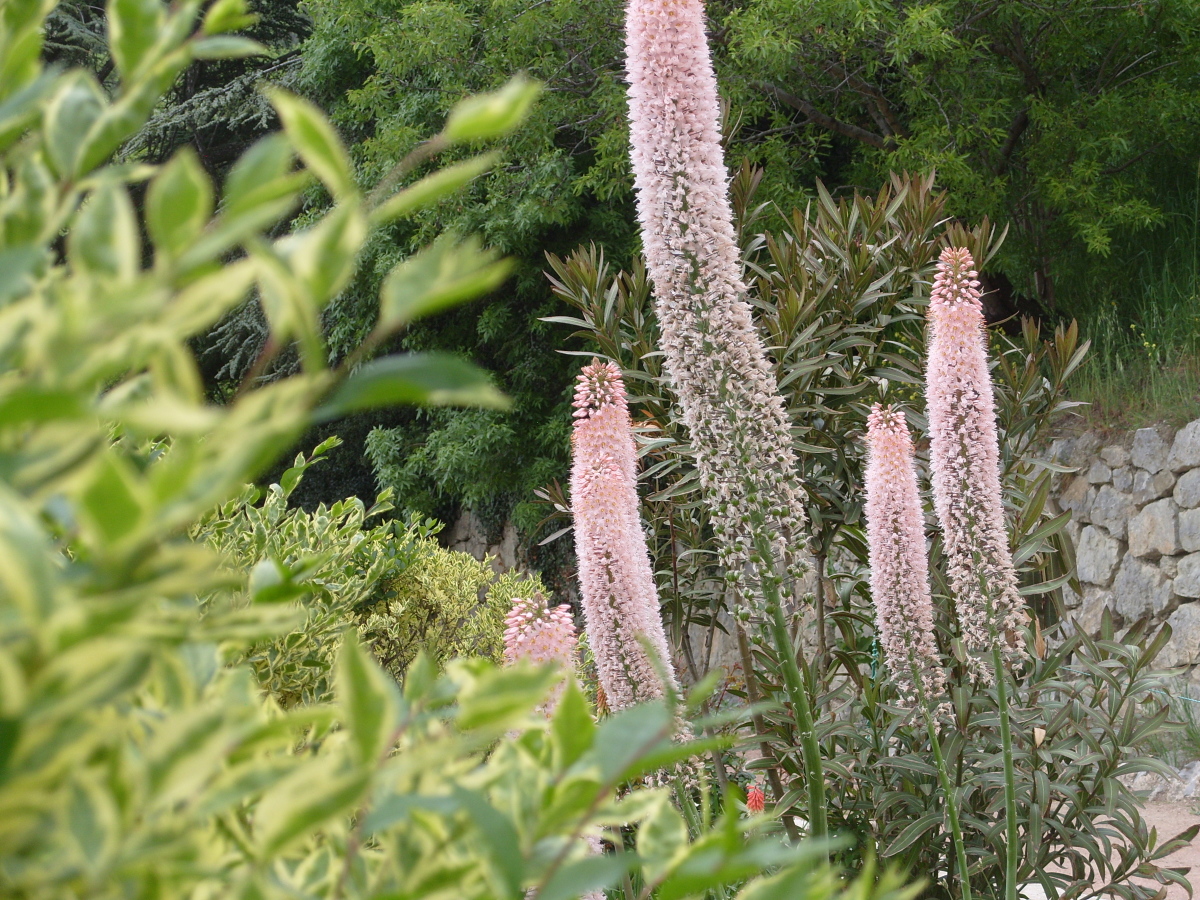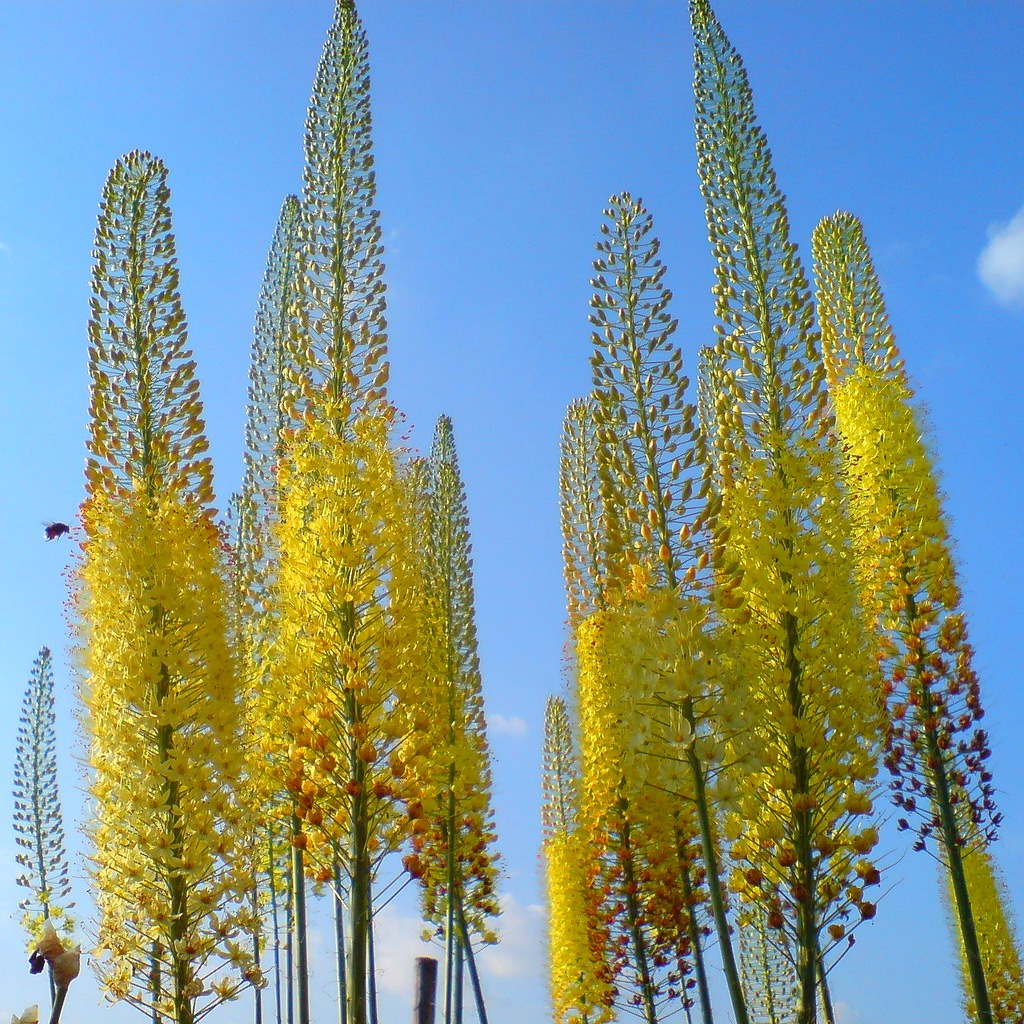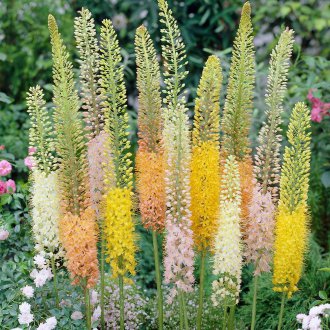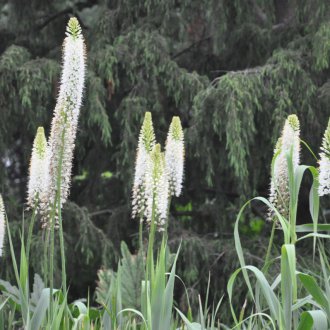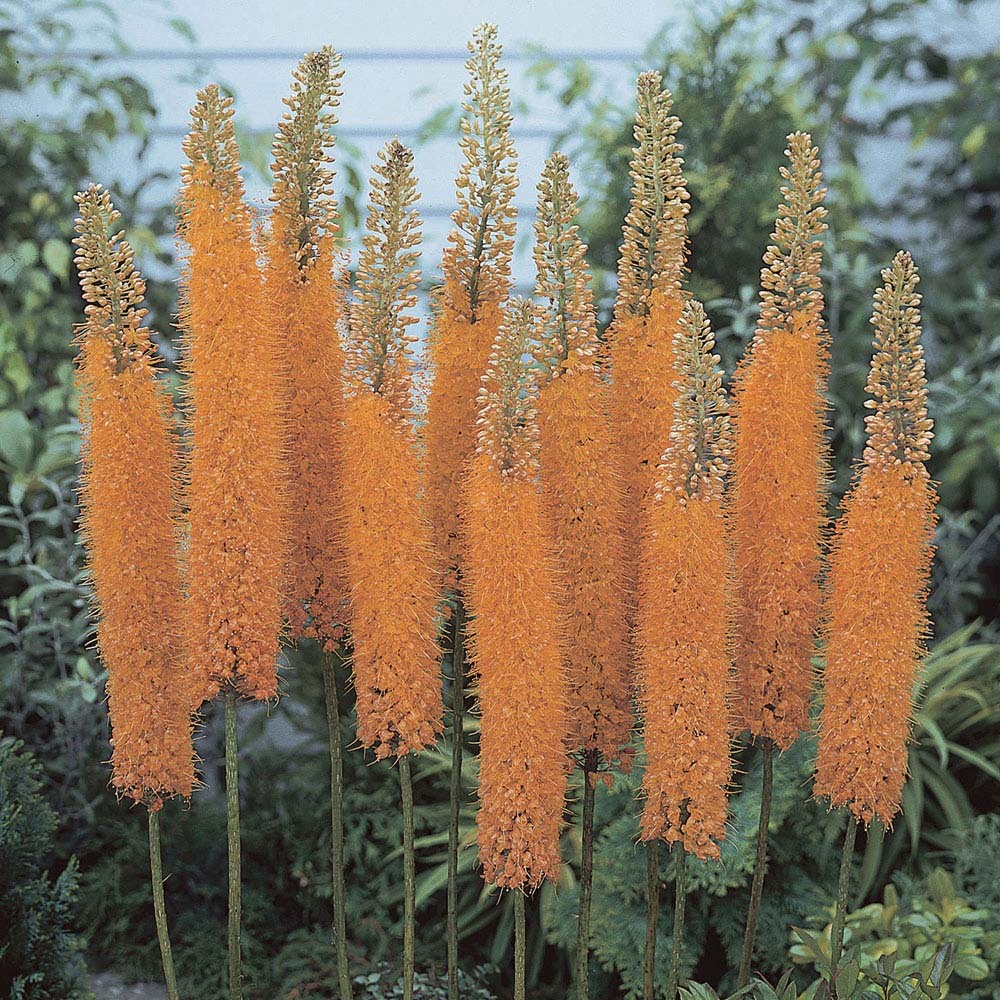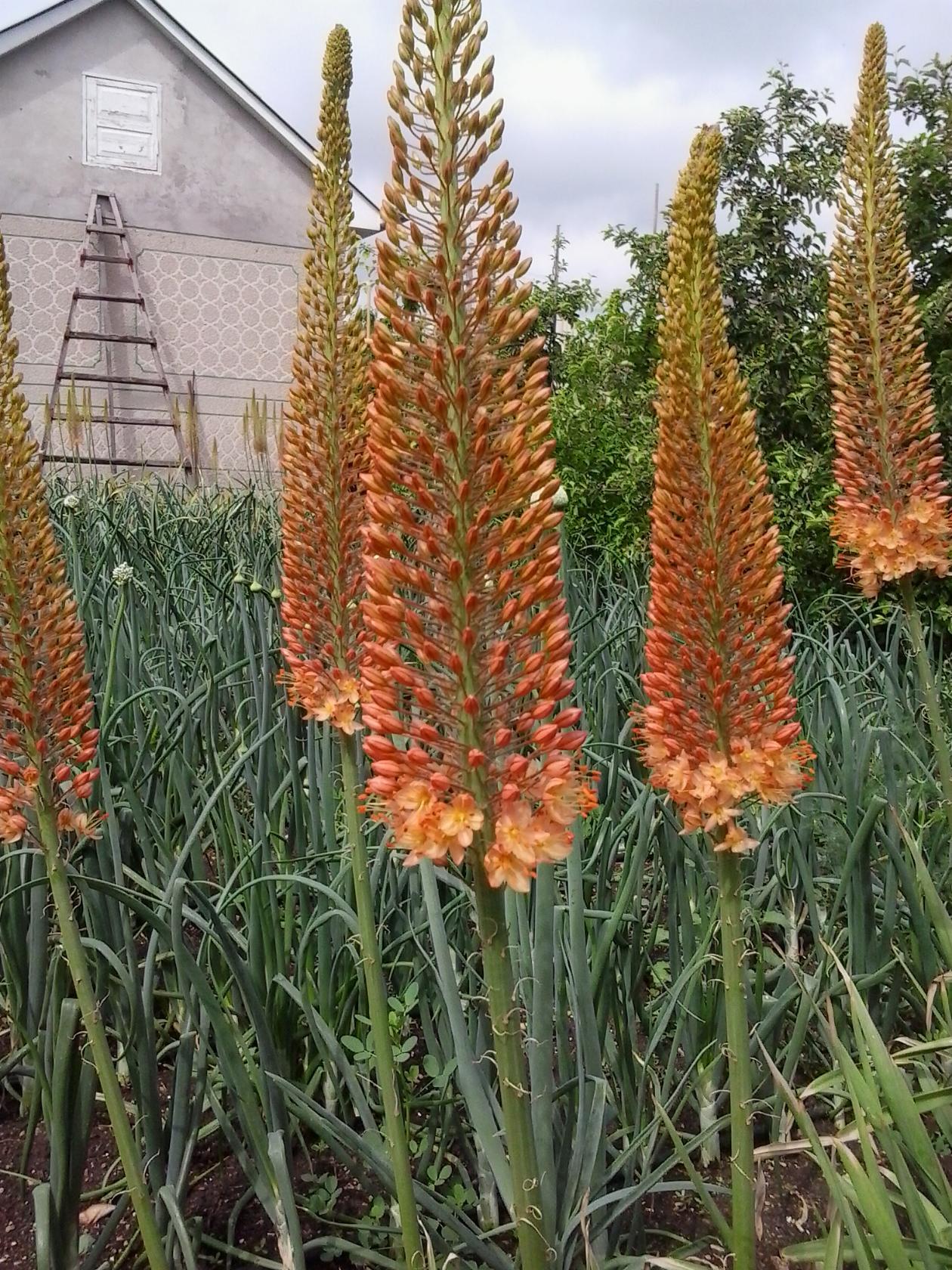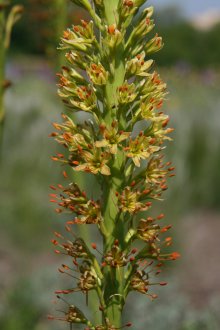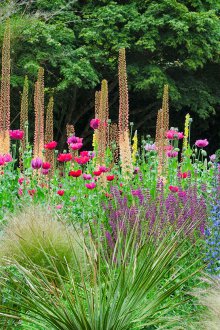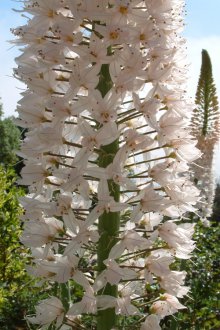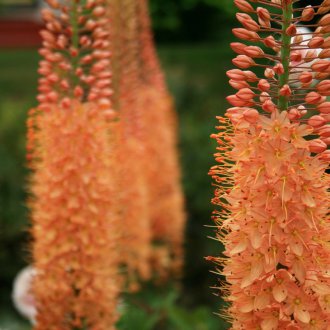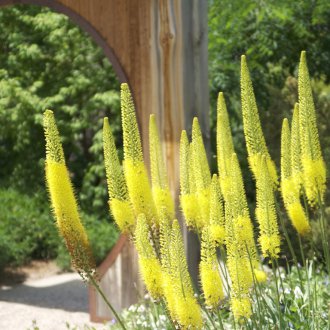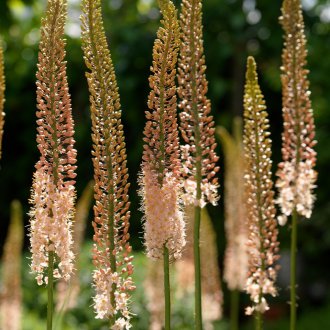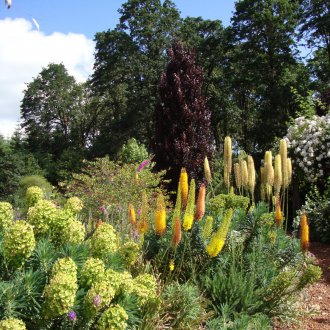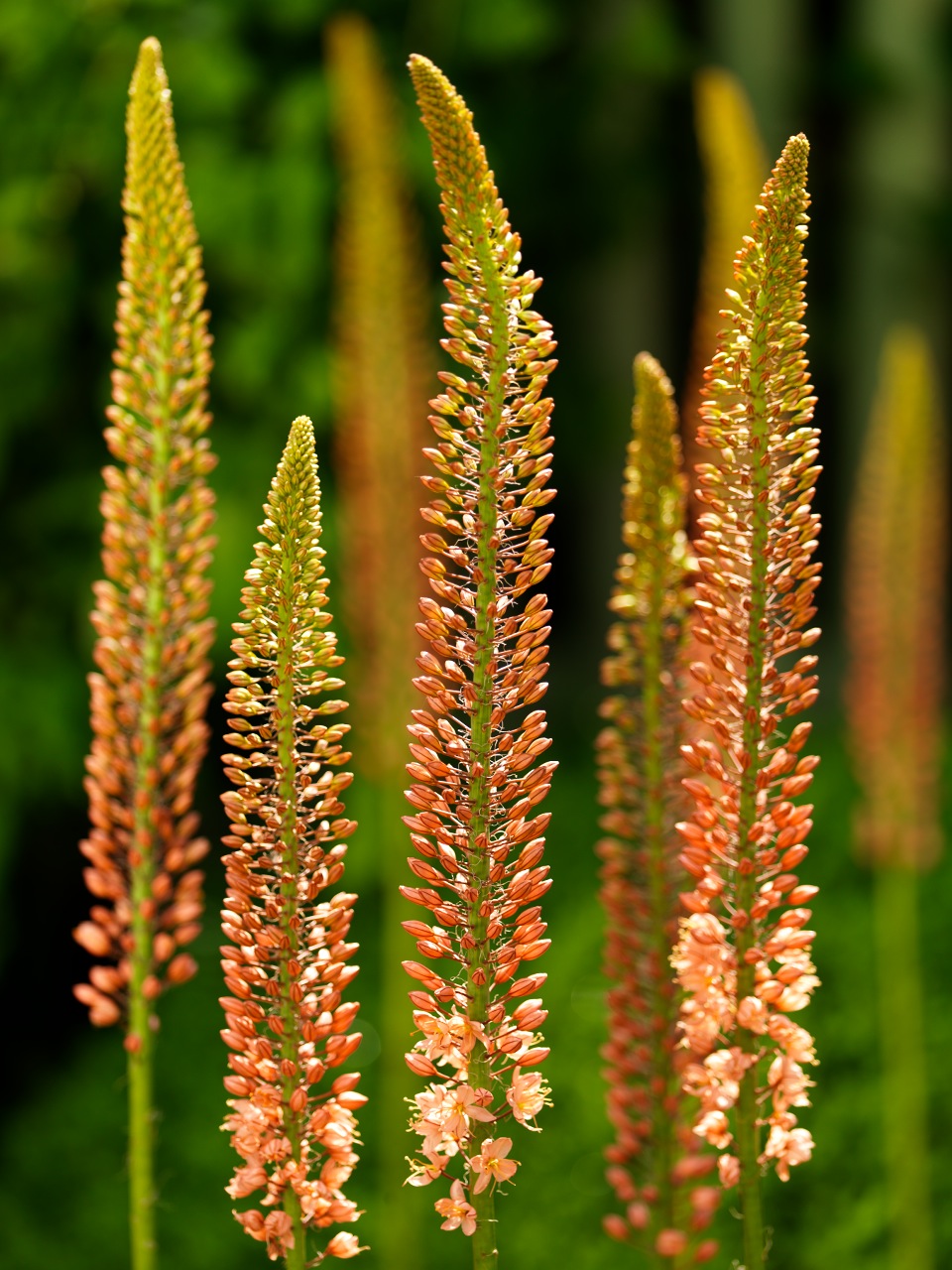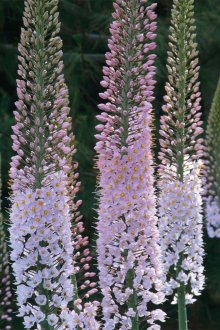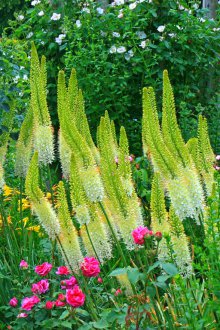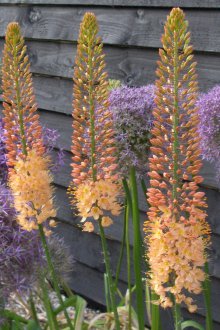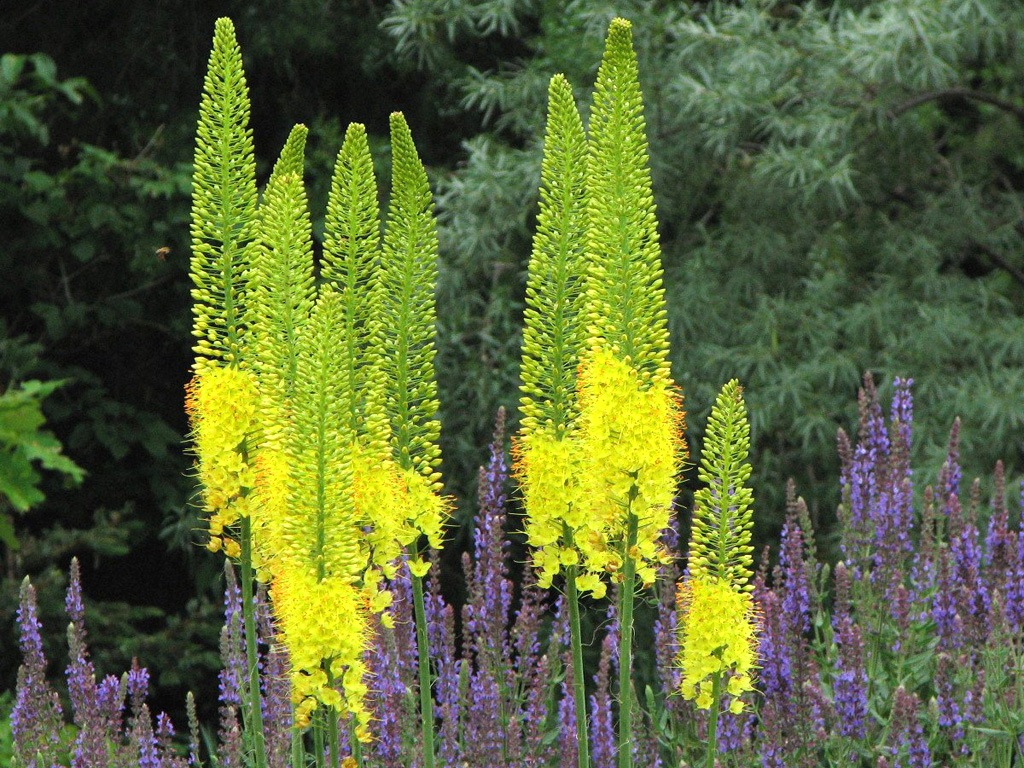Eremurus: features of growing, reproduction, application in the exterior (20 photos)
Content
Blooming eremurus is often compared with large tender candles. These attractive flowers have a long history, but until today they do not lose popularity among lovers of beautiful plants. They have an unusual appearance. High inflorescences are composed of small flowers. The length of the stem reaches a height of 2 meters. Although the plant is considered exotic, you can always buy planting material in specialized stores. It is preliminary important to get acquainted with the features of reproduction, planting and flower care.
Key Features
Eremurus is a member of the lily or asphodeline family. The genus of these perennials includes more than 50 varieties. The flower is widespread in Central and Western Asia. It is found in the wild in the Crimea.
Eremurus are called differently: "Cleopatra's arrows", "desert tails", etc. Plants are perennial and have a short growing season. The flower has a short rhizome, the length of which is 3-4 cm. Fleshy roots extend from it in different directions. In general, the rhizome in appearance resembles a star.
The height of the plants varies between 0.5-2 meters. Basal leaves are collected in a socket and have a trihedral shape. Numerous flowers are characterized by small or medium sizes. They are six-petalled, are pink, yellow, white, collected in a conical panicle. The flowering period lasts from late May to August. At one inflorescence, the flowers open within 30-55 days. With the right selection of varieties, you can achieve flowering for 2 or even 2.5 months. The fruits are small round boxes.
Varieties
Eremurus flower has many varieties. Consider the most popular of them.
Himalayan
The plant got its name from the place of growth. The height of the peduncles reaches 1.2 - 2 m. In width, the bush grows by almost 60 cm. The eremurus has tapeworm leaves of bright green color. Their length is 30 cm. White flowers with a diameter of 2.5 cm are collected in neat pyramidal inflorescences, the length of which reaches 90 cm.
Great
Distributed in Lebanon, Northern Pakistan, Turkey, Iraq. The peduncle of this perennial has a height of 1.2 - 2 m, its width grows by 60 cm. The length of the belt-shaped gray-green leaves reaches 30 - 40 cm. The flowering period is observed somewhat later than in other brothers. Numerous flowers with a diameter of 2 cm of gray-yellow color with red-orange stamens.
Eremurus Isabella
The magnificent flower reaches 1.5 m in height, grows in width by 90 cm. Among the cultivars, mainly hybrid forms are represented. Spear-shaped leaves reach a length of 15-30 cm. Small flowers with a diameter of 2-3 cm are distinguished by a wide variety of colors.
Crimean
Perennial from Crimea can be seen in the Yalta, Crimean and Karadag reserves. Plant height reaches 1.5 m, snow-white flowers.
Powerful
This attractive eremurus grows in Central Asia, in the mountains of the Pamirs and Tien Shan. The height of the bush is 3 m, the width is 1.2 m.Gray-blue leaves reach a length of 1.2 m. The diameter of light pink flowers with yellow and brown stamens is 4 cm. They are collected in an inflorescence up to 120 cm high.
There are other varieties of flower that are actively used by modern gardeners. Today you can choose any eremurus, which, with proper care, will delight with its attractive appearance for many years.
Planting a plant
Experienced experts recommend planting a flower in early autumn. A suitable place should be open, well lit by sunlight and have good drainage.
It is possible to transplant a plant only in neutral soil with low acidity. The flowerbed should be protected from blowing by the winds. Some varieties of eremurus, for example, milky-flowering and Altai, are completely unpretentious to the soil. They are even transplanted onto clay, just add any baking powder to it. Plants with a high location of groundwater are not suitable for planting any varieties of plants.
First you need to properly prepare a suitable earthen mixture. To do this, perform the following manipulations:
- Before planting, gravel or pebbles are laid in the base of the bed, a layer of soil mixture is placed on top, the thickness of which is 0.2-0.4 m. An ideal option is greenhouse or turf soil with the addition of humus, coarse sand and small stones.
- To transplant the plant, you need to dig a hole up to 15 cm deep. Its diameter should correspond to the size of the rhizome. Hybrids are transplanted into open ground at a distance from each other - 0.3-0.6 m. This indicator depends on the height of the flower.
- Before planting, the rhizome should be kept in a weak solution of potassium permanganate for at least 2 hours.
- When transplanting hybrid plant varieties, it is necessary to carefully ensure that their top rises above the earth's surface within 10-15 cm.
When buying seedlings, you must carefully study them. As a rule, the root root has a slightly dried appearance. It must be attended by several kidneys. You should not buy a plant whose roots are broken, because new ones will not grow, and in the open ground it will simply die. The norm is the removal of the thin tips of the roots.
Breeding
Eremurus can be propagated vegetatively or with the help of seeds. The first method is considered simpler.
Vegetative way
After the fall of the ripened seeds, the top of the plant dries up. At this time, the reproduction of eremurus should be done by dividing the rhizome. This is done in two ways:
- Initially, they dig a part of the plant, which is underground. Kornedonets are carefully separated and placed in a warm, dry place to dry. You can plant them at the beginning or middle of autumn.
- The rhizome of eremurus is carefully excavated. Without removing from the soil, they are divided into 4 parts with a sharp knife. The cuts made on hybrid varieties are covered with crushed coal, then covered again with earth. Next year, the plant will give many new outlets that are detached and transplanted.
Seed propagation
Some gardeners propagate eremurus using seeds that are immediately sown on flower beds. It happens as follows:
- In August, flower stalks are cut, and laid out under a canopy for full ripening. After that, the seeds are separated and cleaned.
- At this time, a bed is prepared, the seeds are planted in a dug groove 15 mm deep.
- In the spring, the first shoots appear that require simple maintenance. It is necessary to weed weeds, water the plants, feed, loosen the soil. Hybrid seedlings grow quite slowly, they will bloom only for 4 - 5 years.
The flower also propagates by planting seeds in special containers. Seedlings are not transplanted for 2 to 3 years.Drying is carried out together with the dishes, only after that the hybrids are planted on the bed. Often, flower growers who decide to propagate the plant in this way grow completely new flowers that are completely unlike mothers.
Eremuruses reproduce in different ways, so each grower independently decides which method is best for himself. Equally important is the proper care of the flower.
Use in landscape design
Transplanting an eremurus to a flower bed is an excellent solution for a full-fledged decoration of the site. Original panicles painted in different colors will proudly rise above other vegetation. Fawn, yellow, pale pink, orange, snow-white flowers with proper care will delight others with their exotic beauty.
"Cleopatra's Arrows" look great on lawns, alpine slides, in group plantings and in the background of the beds. Transplanted plants will help to correctly place bright accents, making the design of the personal plot unique and charming.
Eremurus are tall flowers, so it’s hard to see them on the flowerbed. When transplanting plants, it is recommended to combine them with bulbous varieties: hazel grouse, daffodils and tulips. Eremurus harmoniously look in combination with bearded irises and other annuals and perennials that are not hygrophilous: yucca, mallow, cereals, cortaderia.
Desert tails look especially attractive against the background of wooden walls or fences. They are also indispensable in the design of large rocky gardens. When transplanting, it is necessary to observe a distance of 30 - 90 cm, depending on the size of the varieties you like.
Eremurus was once an inhabitant of deserts and steppes. Today, unusual plants can be seen in cottages, personal plots, in gardens. Planting and care in the open ground do not require experience or special knowledge from the gardener, so even beginners can grow plants.
